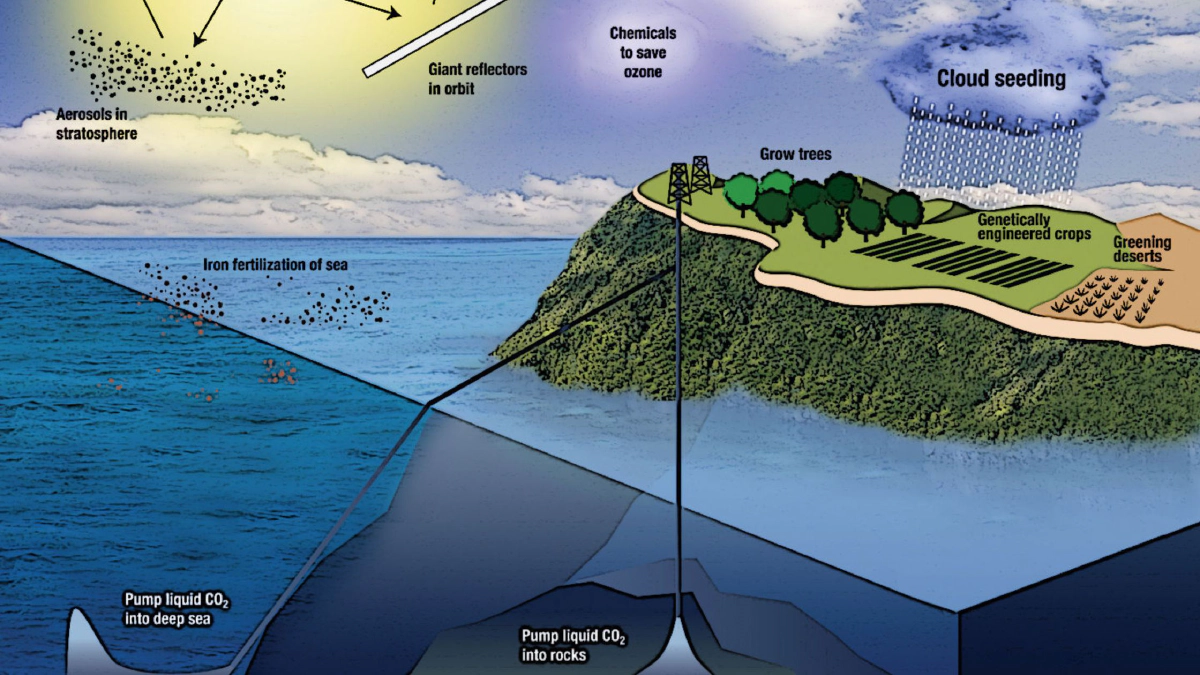Can Geoengineering Be a Probable Solution to Global Warming?
Posted on

The eruption of Mount Pinatubo was the second largest volcanic eruption of the 20th century, which launched millions of tons of aerosols in the stratosphere, decreasing the global average temperature by 0.5 °C lasting for about three years. Now the question is: Can we control the temperature recreating the situations of the Mount Pinatubo event in this era of global warming?
Defined by The Royal Society geoengineering is “…..the deliberate large-scale intervention in the Earth’s climate system, in order to moderate global warming.” In broader terms, geoengineering is any technological idea that can slow, stop or eventually reverse the process of global warming and climate change.
Geoengineering is divided into two subcategories:
- Solar Radiation Management (SRM)
- Carbon Dioxide Removal (CDR)
Solar radiation management refers to offsetting the warming effect of greenhouse gases by reflecting more solar radiation back into space. About 29% of the solar radiation hitting the Earth is reflected back to space by bright surfaces like ice, deserts, snow or clouds. The Earth will trap less radiation if more of it can be reflected back to space.
This can be done by increasing the planetary albedo by marine cloud brightening, creating reflective aerosols, such as stratospheric sulfate aerosols, by protecting natural heat reflectors including sea ice, snow, and glaciers, and ocean Sulphur cycle enhancement.
Volcanic eruptions like the Mount Pinatubo incident eject millions of tons of particles and gas high in the atmosphere. One of these gases is Sulphur dioxide, a nasty smelling, invisible gas combining with water molecules as sulphuric acid creates an acid/water veil up in the atmosphere. These veils reduce the sunlight reaching the Earth’s surface, preventing global warming to some extent.
Carbon dioxide removal refers to removing CO2 from the atmosphere and sequestering it for a long period of time. CDR directly addresses the root cause of climate change- the accumulation of CO2 in the atmosphere. There are many proposed methods of CDR. The direct methods are employed in removing the gas from the atmosphere through huge vents and the indirect ones include afforestation, reforestation, forest restoration to absorb CO2. The ‘Carbon capture and storage’ process includes techniques like creating biochar for mixing it into soil to create terapreta, bioenergy with carbon capture and storage to sequester carbon and simultaneously provide energy, carbon air capture to remove carbon dioxide from ambient air, and ocean afforestation and ocean fertilization (includes iron fertilization of the oceans).
But the sad truth is that we are opting to run a geoengineering experiment to change the face of the Earth at a time when we are producing 40 billion tons of CO2 a year. How far this geoengineering can go in reducing global warming is a million-dollar question.
Geoengineering cannot stop climate change, nor is it a solution of any kind. But it can buy us some precious time until we find a renewable energy source which will help us cope with the changing climate, along with pulling some CO2 out of the atmosphere.







